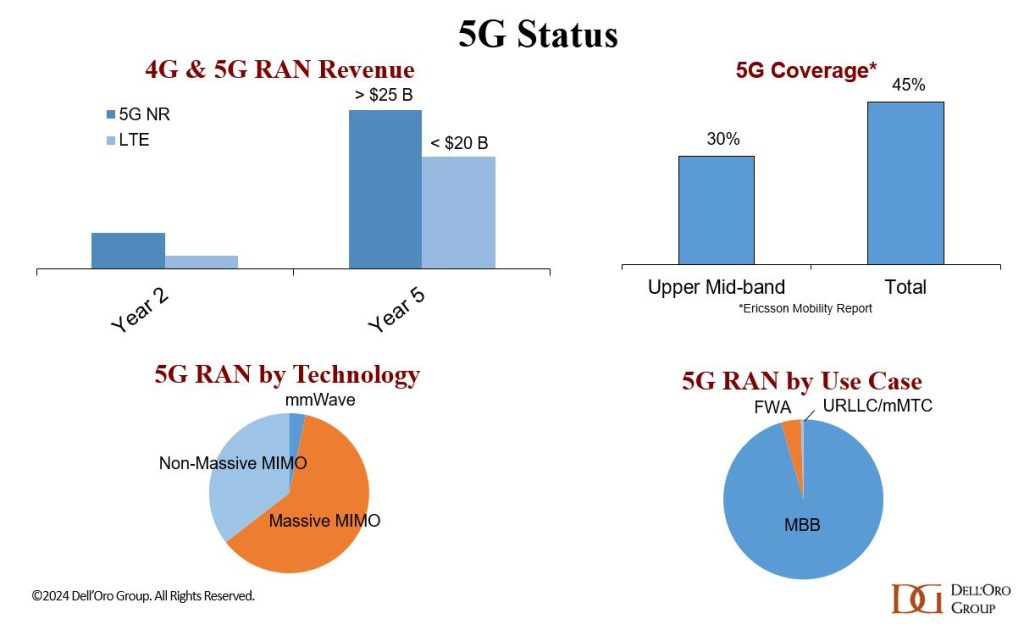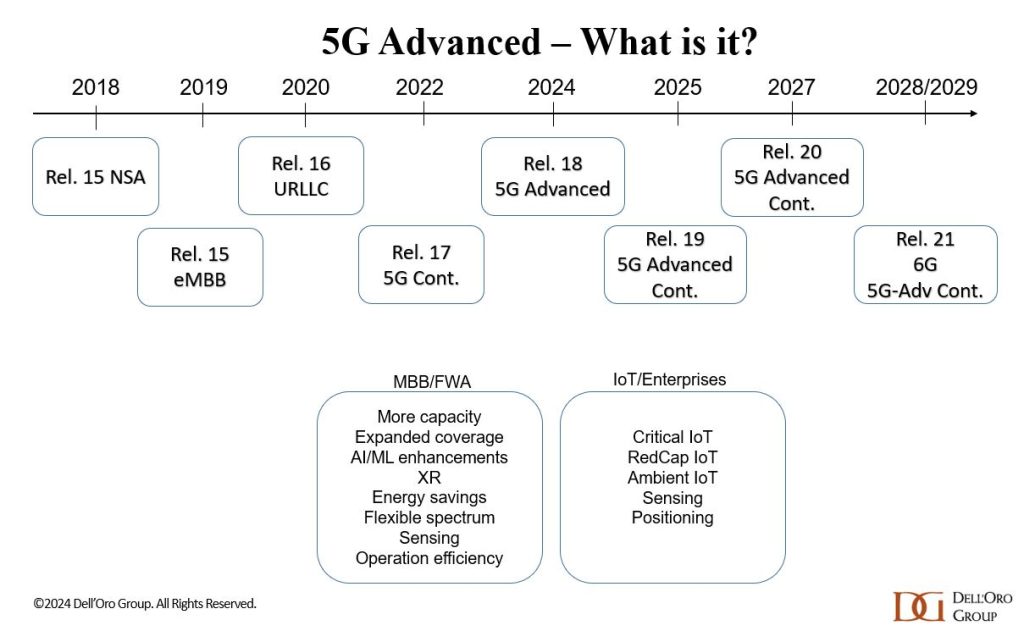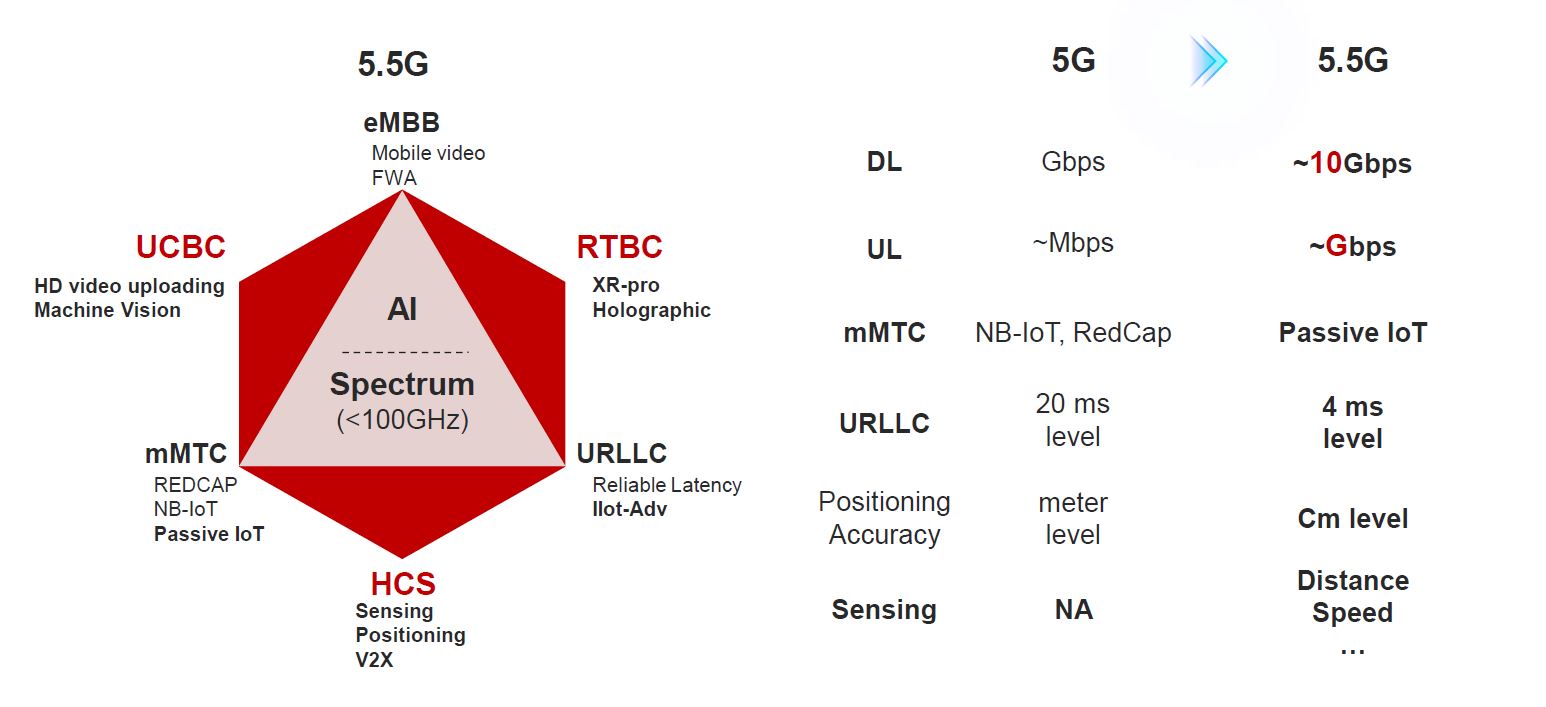5G
5G Advanced – How will it impact the RAN market?

5G has come a long way since the Korean operators launched mobile 5G in early 2019. In the first five years, operators have invested around $0.4 T globally in 5G-related capex, deploying 20 M+ macro and small cell radios. Even so, the results are mixed. From a RAN investment and coverage perspective, 5G has accelerated at a much faster pace than previous mobile technologies. Preliminary findings suggest that 5G already covers around 45% of the global population, according to Ericsson’s Mobility Report. To put things into perspective, LTE reached the same milestone in early 2016. In addition to the reduced gap between the advanced and less advanced markets, the capacity boost realized with the upper mid-band taken together with the proliferation of Massive MIMO is providing a step function reduction in data delivery costs. The SK Telecom 5G/6G white paper focusing on 5G lessons points to a 70% reduction in cost-per-bit relative to LTE. At the same time, 5G has so far been mostly about improving the economics and increasing the data buckets for the existing use cases. However, 5G has so far had limited success in expanding the use cases and reversing the carrier revenue trajectory.
As we look to the next phase of this 5G journey, any incremental technology advancements that can improve spectral efficiencies will be valuable in a world where spectrum is limited and both humans and machines consume increasingly greater amounts of data. Additionally, any enhancements that can promote the growth prospects for Enterprise/Private 5G and Cellular IoT (cIoT)—ultimately helping to realize more aspects of the broader 5G vision—will also play an important role in this next phase. The objective of this blog is to provide updates on the 5G Advanced blogs we previously posted and to review the technologies, opportunities, and RAN implications with 5G-Advanced/5.5G.

What is 5G-Advanced?
The 3GPP roadmap is continuously evolving to fulfill the larger 5G vision. In this initial 5G wave that began in 2018, 3GPP has already completed three major releases (new releases every 1.5 to 2 years): 15, 16, and 17.

These initial releases have been key to the success of both MBB and FWA. But there are still shortcomings that need to be addressed, in order to fulfill the broader 5G vision. Current plans for Release 18 and beyond (often referred to as 5G-Advanced or 5.5G) involve gradual technology improvements aimed at elevating 5G to the next level, creating a foundation for more demanding applications and a broader set of use cases. In addition to performance improvements and support for new applications, sustainability and intelligent network automation are also important building blocks in the broader 5G-Advanced vision (Ericsson).

Current priorities with 5G-Advanced include:
- More capacity and better performance. Some estimates suggest that MIMO enhancements, better beam management, and full duplex technologies taken together with other advancements, including multi-band serving cell (MB-SC) and Extremely Large Antenna Array (ELAA) will deliver another 20% of efficiency improvements relative to today’s 5G. Enhanced uplink (UL) and multi-cell UL improvements could pave the way for greater data rate and latency improvements in the UL. For reference, Huawei defines 5G-Advanced as a site that can support at least 10 Gbps of cell capacity. ZTE is also targeting 10 Gbps+ with 5G-Advanced.
- Expanded coverage. In addition to MIMO and IAB coverage enhancements, 5G-Advanced includes Non-Terrestrial Network (NTN) connectivity improvements, building on the NR/LTE-based NTN support that was introduced with Release 17.
- More intelligence. Releases 15-17 already include some AI/ML features. 5G-Advanced will offer AI/ML enhancements in the RAN (including the air interface) and the management layers. In addition, Intelligent RAN and AI-powered analytics will help operators to improve the performance and proactively address network issues before they become a problem.
- Energy savings. Release 18 includes a confluence of static and dynamic power-saving enhancements for the radios and the overall RAN. Also, the specification is targeting to define a base station energy consumption model with various KPIs to better evaluate transmission and reception consumption/savings.
- Flexible spectrum (FD, DSS, CA). NR is currently based on TDD or FDD spectrum. Full duplex (FD), a 5G-Advanced contender, improves spectrum utilization by allowing UL and DL to share the same spectrum (FD should improve capacity and latency, especially in the UL). Release 18 also includes DSS capacity enhancements (increasing PDCCH capacity by allowing NR PDCCH to be transmitted in symbols overlapping with LTE CRS). Other spectrum-related upgrades with 5G-Advanced include multi-carrier enhancements and NR support for dedicated spectrum bandwidths below 5 MHz.
- Critical IoT. 5G-Advanced includes multiple industrial and IoT related advancements. Release 17 included support for Time Sensitive Networking (TSN), which will be expanded in 5G-Advanced to support Deterministic Networking (DetNet).
- RedCap IoT. NR-Light or Reduced Capability (RedCap) was introduced with 3GPP NR Release 17. 5G-Advanced will introduce lower-tier RedCap devices, seeking to find a better set of tradeoffs between cost, performance, and power consumption.
- Ambient IoT. Passive IoT, sometimes referred to as Ambient IoT, will allow devices/objects to connect without a power source.
- Sensing. Harmonized communication and sensing (HCS) is a Release 19 study item.
- Positioning. Positioning is already supported in Release 16/17, though 5G-Advanced is expected to improve positioning accuracy and power consumption (Nokia has said sub-10 cm positioning is doable). In addition, Release 18 will include support for RedCap devices.
Delloro














You must be logged in to post a comment Login